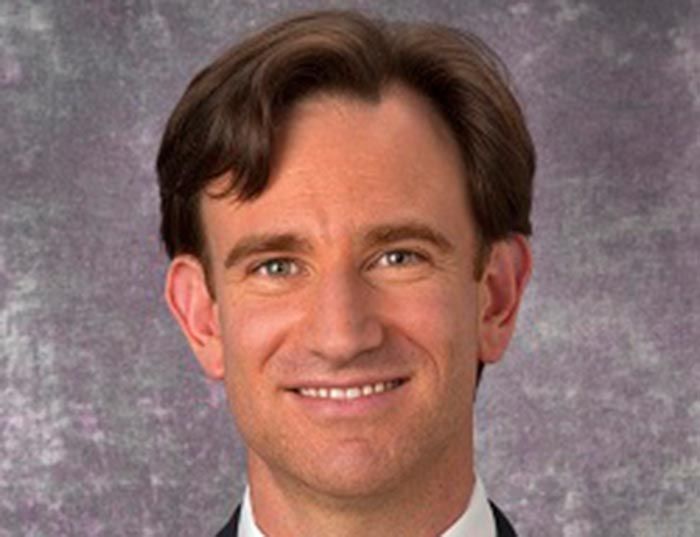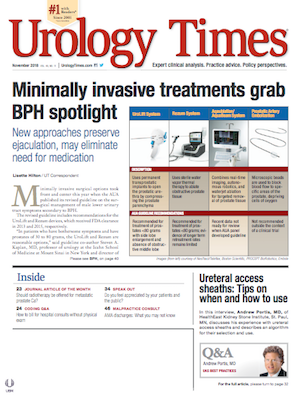Publication
Article
Urology Times Journal
Opioid prescribing after urologic surgeries lowered with novel intervention
Author(s):
The intervention led to a significant reduction in urologists' opioid prescribing after prostatectomy and nephrectomy.
Opioid prescribing for patients receiving prostatectomy or nephrectomy was significantly reduced using a multi-pronged behavioral intervention, according to research published in Cancer.1
The primary outcome measure was the quantity of opioids prescribed in oral morphine equivalents (OMEs) after hospital discharge. The results showed that in patients receiving prostatectomy, the median OMEs prescribed decreased from 195 to 19 with the intervention, and among patients receiving nephrectomy, the median OMEs decreased from 200 to 0 (P <.05 for both). The decreased opioid prescribing did not negatively affect patients’ perceptions of the quality and efficacy of their postoperative pain management.
Bruce L. Jacobs, MD, MPH

The study findings show that, “It is possible to perform major urologic surgery with minimal to no opioid use after discharge without compromising patient-reported outcomes,” study author Bruce L. Jacobs, MD, MPH, assistant professor of Urology, Department of Urology, University of Pittsburgh School of Medicine, told Urology Times. “A thoughtful, multi-pronged intervention can have a desired effect on physician behavior even after the intervention is stopped.”
The single-institution (University of Pittsburgh), single-arm study assessed opioid prescribing by urologists for adult patients who received a prostatectomy or nephrectomy from November 2018 to July 2019. The prescribing patterns of 13 urologists were examined for the study.
The multi-pronged behavioral intervention had 3 components. The first involved a grand rounds presentation to urology surgeons and residents informing them of the risks of patient opioid abuse after surgery. The staff members were educated on available nonopioid regimens for managing pain. The second component was individual audit feedback related to individual prescribing patterns over the previous month. Emails and text messages were used as part of the feedback mechanisms. The final part of the intervention was a monthly comparison report distributed to the entire department listing the number of opioids prescribed by each surgeon.
The study included pre-intervention, intervention, and washout phases. The pre-intervention phase consisted of the 4-month period prior to the intervention during which the investigators compiled the baseline numbers for surgeons’ opioid prescribing. The intervention phase was the 6-month period during which the intervention was implemented. The washout phase was the 3-month post-intervention data collection period.
Overall, 382 patients received prostatectomy, including 120 in the pre-intervention phase, 178 in the intervention phase, and 84 in the washout phase. Patient demographics were similar across the 3 phases. The rates of open versus minimally invasive surgery were 44% versus 56%, 37% versus 63%, and 38% versus 62%, in the pre-intervention, intervention, and washout groups, respectively.
Among the 306 patients who received nephrectomy, the breakdown by phase was 92 in the pre-intervention, 142 in the intervention, and 72 in the washout. Almost 60% of patients received partial nephrectomies across the 3 groups, and 3% of patients underwent nephroureterectomy. Patients characteristics were similar across the 3 groups, except that fewer patients in the washout phase had hospital stays lasting 3 or more days.
For both types of urologic surgery, there was a significant decrease in the median OMEs prescribed between the preintervention phase and both the intervention phase (P = .01) and the washout phase (P = .01). It is noteworthy that the reduction in opioid prescribing held up throughout the washout period, even though the intervention had stopped.
Beyond assessing opioid prescribing patterns, the investigators used the International Pain Outcomes questionnaire to evaluate patients’ perceptions of their pain management care following surgery. Patients were given the surveys at their 2-week post-surgery follow-up.
The questionnaire results showed that anxiety levels were higher among patients who underwent prostatectomy and were discharged with opioids compared to the levels for patients discharged without opioids (P <.05). Beyond this finding, however, patients receiving either surgical procedure discharged with and without opioids had comparable perceptions of post-surgery pain management, activity levels, somatic symptoms, and psychiatric symptoms.
The authors noted in their concluding remarks that they are not in favor of a complete elimination of opioid prescribing. “We are not advocating for no opioids in all cases. Some patients, such as those with prior opioid use, may require opioids. However, the majority of patients will not need opioids after discharge.”
Reference
1. Jacobs BL, Rogers D, Yabes JG, et al. Large reduction in opioid prescribing by a multipronged behavioral intervention after major urologic surgery [published online October 1, 2020]. Cancer. doi: 10.1002/cncr.33200
Newsletter
Stay current with the latest urology news and practice-changing insights — sign up now for the essential updates every urologist needs.





















